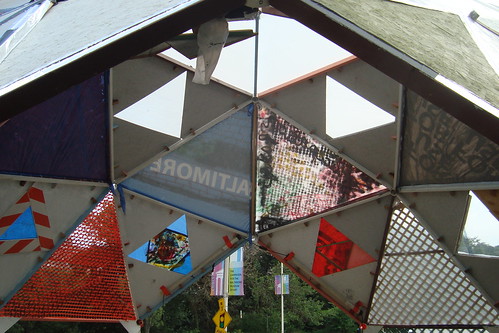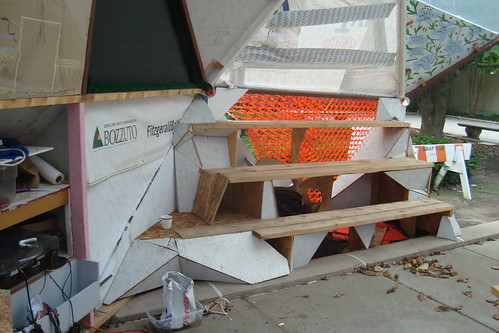
The Baltimore Development Cooperative (not to be confused with the Baltimore Development Corporation) has just won the 2009 Janet & Walter Sondheim Prize. The award represents regional and national recognition, and more tangibly, $25,000 in cash.
That a loose collective of recent graduates, whose major work to date is a community garden on a squatted vacant lot, can walk away with a prestigious regional art prize speaks to the current excitement and confusion in art, architecture, landscape, and planning.
Since the irrational exuberance of the mid-late aughties has peaked and popped, we're now in the middle of the inevitable backlash. Fires in China and labor strife in Dubai have become easy metaphors for the descendancy of an explicately formal and digital aesthetic, and by extension, an economic order whose agenda interlocked with it. And so the rise of work that claims a more direct engagement with social, economic, and evironmental justice. See, for example, NYTimes critic Nicolai Ourossoff: Architecture: It Was Fun Till the Money Ran Out, or activist design advocate Cameron Sinclair's The Architect's Dilemma: The Architecture of Excess vs. an Architecture of Relevance.
These journalistic cliches and reductive dualisms are a sadly predictable oversimplification of some complex territory. This is a disservice to the discipline. We can have excess and relevance (and fun) in architecture, whether there's money around or not.
It's been interesting to watch a similar discussion play out locally around the BDC's Sondheim win, with some questioning the presentation of interdisciplinary community organizing as museum quality art, and others questioning the legitimacy of the group's social engagement in the first place.
The major piece in their BMA show, The Dome, is an artifact that suggests there's more space, and fun, at angles to these simple oppositions than might be apparent at first. Bruce Sterling, in a post about the SmartGeometry conference, highlights the question:
"What happens when parametric architecture gets too cheap and too easy? Karrie Jacobs wonders. I think I already know, but it’s nice to see the issue being raised here. Note that the cover of this month’s METROPOLIS is a “twenty-thousand-dollar house” made out of scrap. Is there a reason that isn’t parametric technokitsch scrap yet? Yes… because it isn’t 2015 yet."
The piece, aside from its stated function as a Cultural Container (it's available for any individual or group to book for almost any purpose), is interesting as example of a kind of Artisanal Parametrics, hand made from scrap, but with the recognizable influence of the algorithmically geometric and digital.

3 comments:
Hey you got a link from Bruce Sterling to your newest post on artisinal parametrics.
another parametric scrap project: http://biosarch.wordpress.com/2009/09/13/aiasf-parametric-canopy/
when parametric becomes "cheap" in 2015, we will see a lot of kitch, but also a lot of work by people who are now excluded from the club (can't afford a laser cutter or a cnc mill). This project was designed with parametric software and fabricated (mostly) with a tape measure and a pair of nippers.
Thank you for sharing such great posts!I love your blog. 2945abc45 0114
Post a Comment